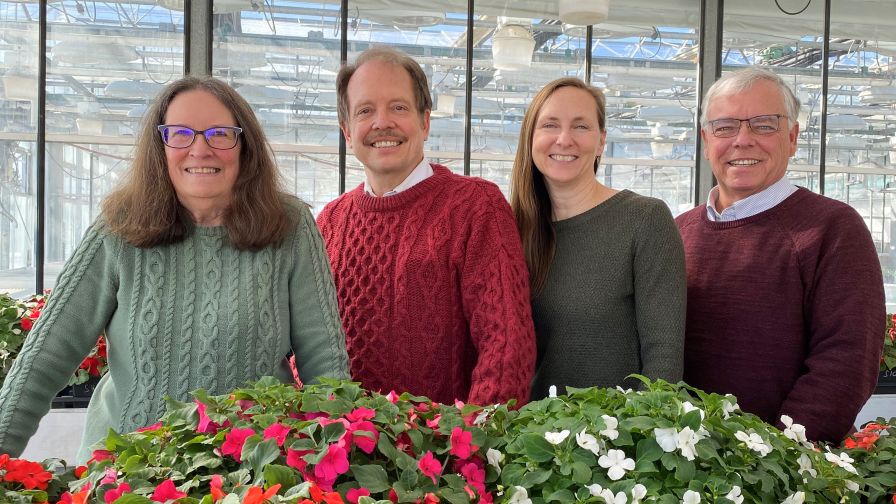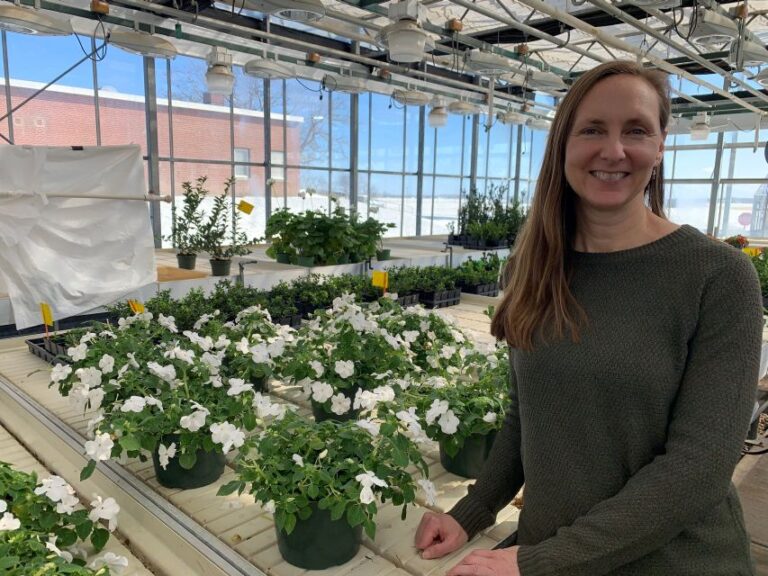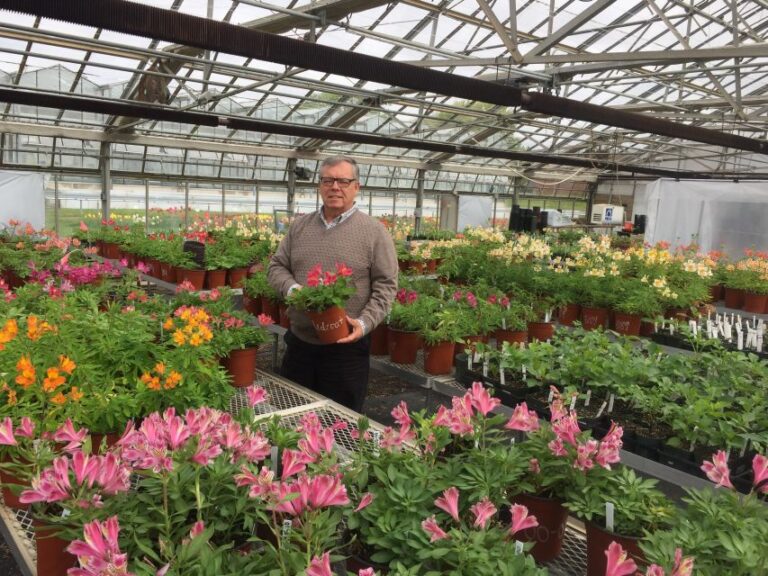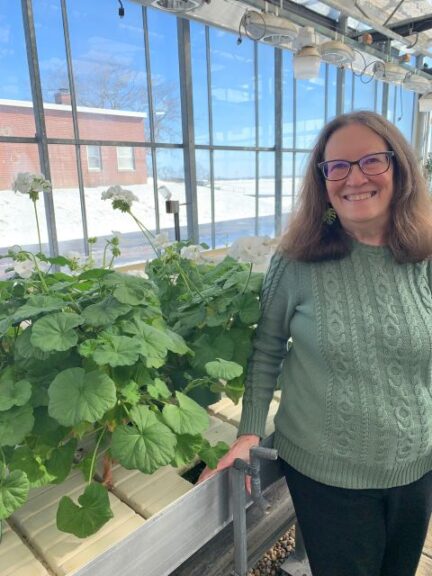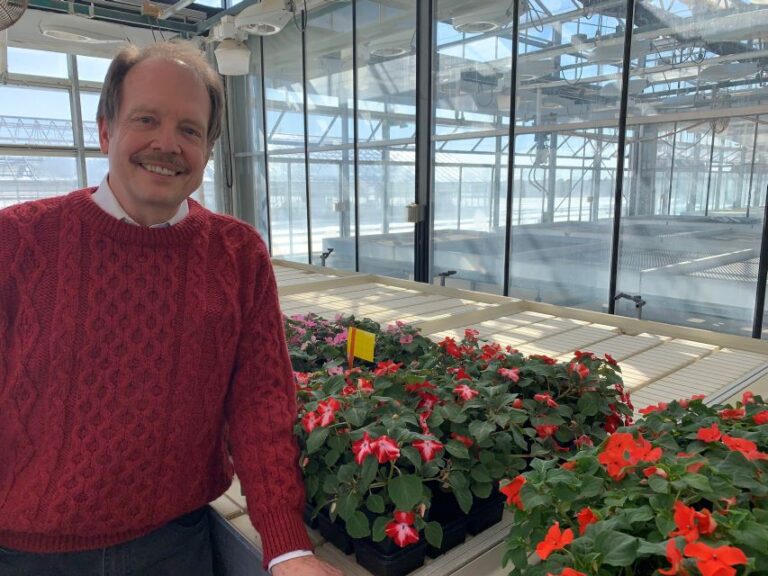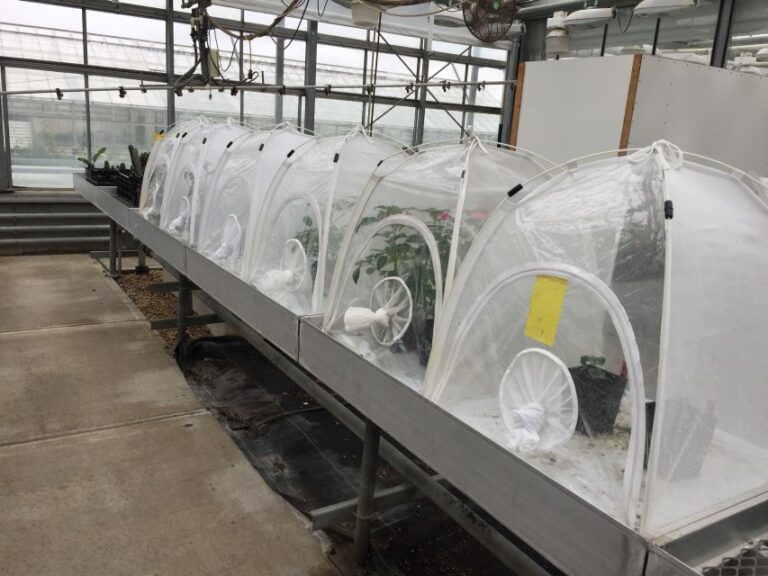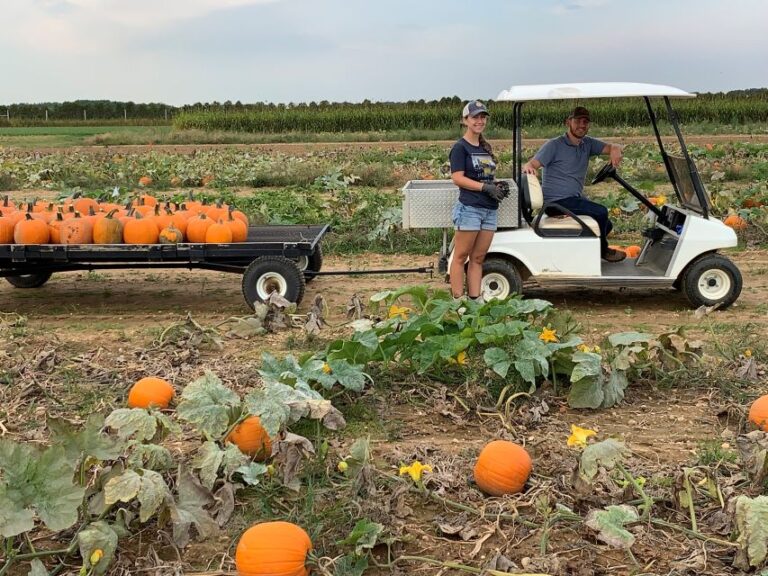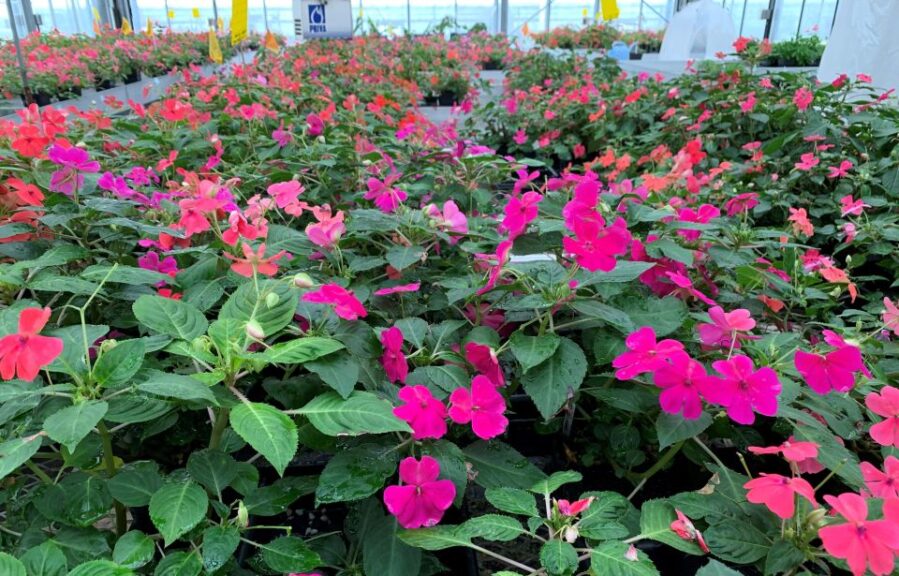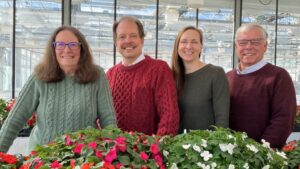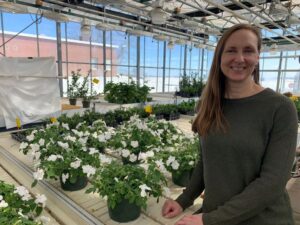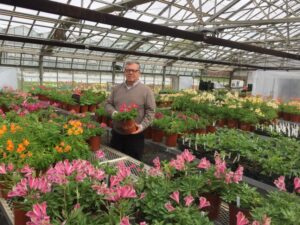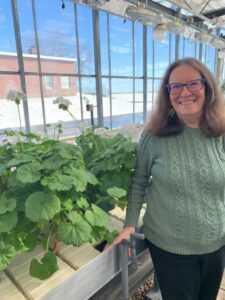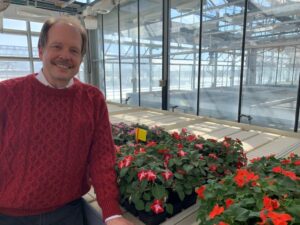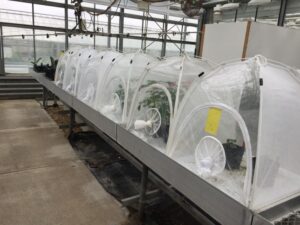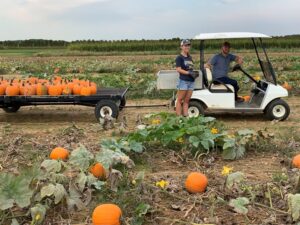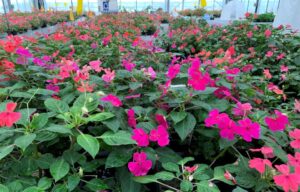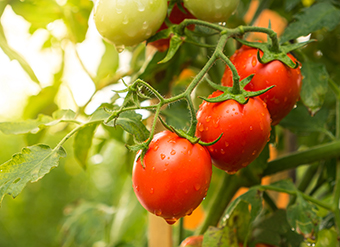100 Years Serving Horticulture at Cornell University
Cornell University’s Long Island Horticultural Research and Extension Center (LIHREC) is a rare gem tucked away among the family farms and wineries that dot the landscape in Suffolk County, NY. The center has a long list of scientific accomplishments to its name, and 2022 marks its latest feat — 100 years of serving the horticultural and agricultural industries on Long Island and throughout New York.
The successful history of the LIHREC stems from a close relationship between Cornell University and the Cornell Cooperative Extension of Suffolk County. Both organizations provide staff to run the LIHREC, and their combined efforts, along with those of local growers and the state/county legislature, have ensured that horticulture and agriculture in Long Island remain thriving enterprises.
Serving a Supportive Growing Community
The LIHREC that exists today came out of a recognition that Long Island soils, climate, pest problems, and markets differed significantly from those of upstate New York and that a research center was needed to address local problems. In 1922, a committee purchased a 30-acre farm, the current site of the LIHREC, that it called the Long Island Vegetable Research Farm. The name change to the Long Island Horticultural Research and Extension Center would come later, in 1999. The 100-year-old center includes 68 acres of irrigated field research plots, a state-of-the-art 17,000 square foot greenhouse, a plant tissue culture and micropropagation laboratory, a grape vineyard, and an ornamental plant nursery.
The LIHREC is the only research center in the U.S. with scientists and professionals that represent each of the commodity interests (greenhouse/floriculture, woody ornamentals and landscape horticulture, vegetables, and fruit/grapes) and the cross disciplines (entomology, plant pathology, weed science, and plant tissue culture/micropropagation). The center’s location at the heart of New York State’s greenhouse, nursery, vegetable, and grape production places its staff in a unique position to interact with its grower stakeholders on a regular basis. The green industry is within a 50-mile radius of the center, allowing for daily staff interactions with stakeholders for diagnosis, consultation, training, and tours.
The center enjoys strong support from the agricultural community on Long Island. It works closely with advisory boards formed for each of the commodity groups. Board members include grower representatives that provide counsel and keep the director apprised of major issues and concerns.
“Our stakeholders are willing to support us in many different ways, but mostly as advocates for the center,” says Mark Bridgen, Ph.D., Professor and Director of the LIHREC.
A good example of this is the establishment of the Founder’s Fund endowment in 2020 to support the research and Extension programs at the LIHREC. Five Long Island greenhouse businesses, including Coastal Greenhouses (formerly Ivy Acres), Van de Wetering Greenhouses, Kurt Weiss Greenhouses, Otto Keil Greenhouses, and C.J. Van Bourgondien Greenhouses, generously donated $130,000 in funds to set up the endowment. This came a year after retired nurseryman Ray Bell set up the first-ever endowment for the center. The Founder’s Fund makes it possible
for the LIHREC to continue to receive donations for its support.
The Sentinels Guarding the Gate
The importance of the LIHREC team’s interactions with the grower community as a source of technical information, advice, and solutions tailored to each distinct situation cannot be understated.
“We connect people with a much larger national (and international) network of expertise and in some ways act as sentinels for detecting new problems that pose a threat to the industry, the economy, and the environment,” says Daniel Owen Gilrein, Ph.D., Entomologist for Cornell Cooperative Extension of Suffolk County. “This really hasn’t changed all that much over the years, though the issues themselves certainly do and our responses also evolve.”
The center has done considerable work, supported largely through the IR-4 Project, investigating the crop safety of new products. These studies help alert growers to crop sensitivities, which fortunately are uncommon but can have serious consequences when they do occur, Gilrein says.
Gilrein has worked at the LIHREC since 1987, first as a Cornell Regional IPM Specialist and then moving in 1995 to Extension Entomologist. He and his staff provide insect and pest management information including diagnostics and identification services, carry out applied research to investigate new and better solutions to pest problems, and participate in education/outreach to help growers stay current on research findings and important issues of concern.
One project of great importance to the horticultural industry was the LIHREC staff’s work, headed by Bridgen, using plant tissue culture to develop new cultivars of impatiens that are resistant to Impatiens Downy Mildew (IDM), a devastating disease that affects garden impatiens (Impatiens walleriana) as well as other crops. Once one of the most valuable annual bedding crops in terms of yearly sales, impatiens lost ground to petunias and geraniums thanks to the economic impacts of IDM. However, garden impatiens, now with better resistance to IDM, grace landscape beds once again thanks to work by the LIHREC team and major breeders such as Ball Horticultural and Syngenta Flowers. Bridgen and his staff are currently working to develop F1 hybrids of IDM resistant impatiens that can be seed propagated.
Bridgen joined the LIHREC in 2002. The now retired Head of the Long Island Farm Bureau, Joe Gergela, who interviewed Bridgen for the job, had one piece of advice for the newly appointed director.
“I remember him telling me that I was expected to do a good job, and if I didn’t, I was out,” Bridgen says.
Bridgen took that advice to heart and has provided strong leadership for the LIHREC ever since. In addition to his plant tissue culture and micropropagation work and impatiens breeding, he has focused his research on mutation breeding of vitex, breeding of alstroemeria (expect some introductions of winter-hardy alstroemeria soon), and most recently, micropropagation of hemp.
Ornamental plant pathologist Margery Daughtrey, Ph.D., who joined the LIHREC in 1978, also works on IDM. She is an avid reader of mystery novels and says she has never been able to resist a good mystery. There is no doubt Daughtrey is good at helping solve some of the most vexing mysteries in plant pathology. She is internationally recognized as a leader in the prevention and mitigation of disease losses in floriculture and nursery production, an excellent diagnostician, and a well-known author in her field. Daughtrey has been at the forefront of efforts to combat chrysanthemum white rust (Puccinia horiana), Southern wilt (Ralstonia solanacearum) on geraniums, and downy mildew on coleus, to name a few of her accomplishments.
While Daughtrey was the first woman to join the LIHREC, there are several women that are a part of the faculty there today. One of those is Nora Catlin, Ph.D., Greenhouse Extension Specialist for Cornell Cooperative Extension of Suffolk County, who has worked at the LIHREC for the last 16 years. Catlin has a background in plant pathology, but as a specialist in floriculture she wears many hats. While research is part of her role, Extension outreach is the main part of her job. When there is information that needs to get out to the growers, Catlin works to distribute that information through the right channels using every avenue she can to deliver it in a timely manner. She interacts with growers, mostly on the greenhouse side, and interfaces with other LIHREC staff members in other areas as needed to serve the center’s stakeholders.
Catlin says one focus she and other staff members have had of late is identifying sustainable practices that will maintain the viability of Long Island agricultural and horticultural communities for the long-term future.
“We have a lot of environmental concerns here because of our sandy soils,” she says. “We are right on top of an aquifer, which is a drinking water source for a few million people. There are a lot of concerns with making sure our practices are environmentally sustainable to mitigate any issues. The work the staff at the LIHREC does, both with research and in interactions with growers, is integral to this effort.”
The team members at the LIHREC say every year is different for the Long Island growing community, and they have had to adapt and change as the industry has changed to serve their stakeholders. Staff members have come and gone, growers have retired, critical issues have drifted to the forefront and faded as new challenges took their place. Yet through it all, the LIHREC has been a constant serving the horticulture and agriculture industries with the same dedication it started with 100 years ago.
How Important Is the Green Industry to Long Island, NY?
Suffolk County, home of Cornell University’s Long Island Horticultural Research and Extension Center, plays a significant role in New York’s economic growth. Check out a few of these facts shared in a bulletin put out by the Suffolk County government.
Did You Know?
- The county is the fourth-largest county in New York for agricultural production with $226 million in annual sales. Five hundred and sixty farms employ more than 4,600 people, accounting for $89 million in payroll.
- The county ranks first for greenhouse, nursery, sod, cantaloupe, cauliflower, mushroom, and pumpkin production.
- Agritourism is an outsized component of Suffolk County agriculture and increased 143% to more than $10 million over the last five years. Direct food sales at farmstands and farmers’ markets increased 209% to nearly $28 million.
The 500 Project: Save Our Greenhouses
There’s a lot to celebrate about a century of innovation and research at Cornell University’s Long Island Horticultural Research and Extension Center (LIHREC). But 100 years also means a lot of wear and tear on facilities. The existing research greenhouses at the LIHREC need some renovation. While the greenhouse frame remains solid, the old glass panes need replacing with tempered glass. The project is complicated by the need for asbestos abatement. All this comes with an expensive price tag of $300,000. You can help the LIHREC maintain its track record of excellence in plant research, which benefits not only the Long Island community but the larger greenhouse industry in the U.S. as well.
If you are interested in helping, contact LIHREC Director Mark Bridgen to learn how you can be part of the 500 project, a fundraiser where the LIHREC is asking 600 people or businesses to commit $500 to this project over the next two years ($250 in 2022, $250 in 2023) to help it reach the $300,000 goal.




